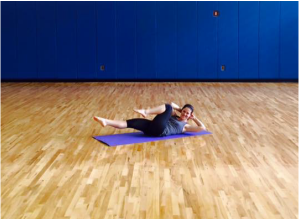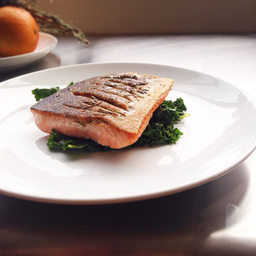originally published by Pittsford Performance Care
It is not uncommon for an athlete to think about an injury as having to do with a muscle, tendon, ligament, or bone. We do not traditionally think about injuries as having to do the the brain. The truth of the matter is that from a scientific perspective most all injuries can be traced back to the neuron system. The brain controls all functions and systems of the body with no action occurring short of a neural signal. With these points in mind we can conclude that to achieve optimal injury recovery and performance, a neural perspective must be employed. Read on to learn how.
Central Integrative State Defined:
The total integrated input received by a neuron at any given moment and the probability based on this state that it will produce a response.
“Neural/Brain Health”
The definition above is very important to the remainder of this post. I would encourage you to think about the Central Integrative State (CIS) as the overall health of the nervous system at any given time and the likelihood that it will allow for optimal performance of the body. Keeping in mind that the brain controls the body we can extrapolate that the health of the rest of the systems is directly related to the CIS.
The performance of an athlete is directly dependent upon activation of the muscular system with proper speed, sequence, and symmetry. This system is directly under neural control. A weakened CIS will alter one of the three variables of motor contraction listed above. This causes a deficiency in the supportive role of this system leaving other structures such as tendons, ligaments, bone, or nerve susceptible to injury. We are beginning to see the role that the brain plays in performance and injury prevention. To understand further check out this previous blog post. How then does the athlete apply this information to stay injury free?
What Negatively Affects the CIS?
The following list briefly speaks to variables which can diminish the CIS.
1. Stress
2. Poor Sleep Patterns
3. Poor Diet
4. Dysfunctional Movement Patterns/Poor Posture
5. Injury History
6. Poor Footwear
All of these, if present, send negative stimuli to the brain which will eventually have a deleterious affect on all systems of the body. When addressing musculoskeletal injuries this piece cannot be overlooked.
How is my CIS?
An individual cannot determine their brain health with a simple test or questionnaire. The CIS is dependent upon many variables and can change from moment to moment. Thinking through what negative influences from the list above may be present in your life would give some insight into your CIS. The presence of injury is one strong indicator of a weakened CIS which we focus on heavily when working to correct and prevent injuries. We know this because in most cases for an injury to arise there had to be some delay or dysfunction neurologically which allowed the system to be vulnerable to force insult.
While challenge exists in an individual’s ability to self-assess their CIS, we are able to utilize a precise system of muscle testing to determine the speed, symmetry, and sequence of muscle activity. The objectivity of the muscle testing can give insight into the CIS through its ability to properly engage the muscular system. For example if all muscles in the lower extremities produce contractions with strong force and reactivity we can extrapolate that the neural system is functioning with a fairly strong CIS. If there are members of the muscular system which reveal weak, delayed, or asymmetrical muscle firing we can conclude a weak CIS.
How Can we Improve the CIS?
To improve the CIS we can engage in activities which are opposite of those listed above as neural stressors. These include eating proper nutrition, enjoying quality sleep, eliminating stress, taking care of injuries, engaging in proper movement patterns, and wearing good footwear. For more info on footwear check out this previous blog post. These are all activities which will send positive fuel to the central nervous system increasing the CIS and overall body performance. The role that we play from a clinical standpoint in improving the CIS is to fix injuries and correct neural imbalances. Correcting this negative stressor is especially important for the athlete or active individual if they wish to continue in activity long term.
Main Point
How then should the reader respond to this? I would recommend keeping these following three thoughts in mind:
1. Make decisions daily in all areas of your life to improve you neural health.
2. Take care of pain and injury when they present to avoid continued and further damage. Do this by addressing the true underlying insult leading to tissue damage.
3. Choose activities to engage in which will not over stress the system and find a healthy level to enjoy them. For help in making this decision check out a this previous blog post.
I would like to encourage individuals to think through how this could apply to them and how take steps toward achieving an improved CIS to prevent injury and enjoy activity and daily life. Questions are welcome!
by Dr. Mike Fink
originally published by Pittsford Performance Care




 RSS Feed
RSS Feed